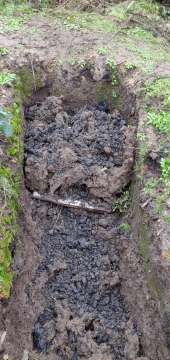So I'm helping out at a
local Community Farm at the moment, and the owner has worries about the regular droughts that we have here in Queensland, Australia. In the dry spells, we can go up to 6 months without a drop of rain, meaning that the fruit
trees and orchards usually have to be pump irrigated pretty much every day in order to keep the trees alive.
I'm suggesting hugelkulture as an alternative to that, and wanted to run past my idea with the forum. My idea was to build circular hugelkulture beds around the fruit trees, at a height of about 6 feet, in order to soak up loads of
water and allow indirect watering of the fruit tree next to the bed. My idea was to place the beds around the tree like this (sorry about the simplicity of the drawing!!!)
_____
/.......\
|...o...|
\____/
With the lines being the
hugelkultur bed, and the o being the fruit tree. The ...... are empty space, as are the empty space.
We would then have a method of infinite irrigation for the fruit trees via misting from the beds, new space to grow crops on the beds, more protection from grazing animals, and general all over awesomeness.
Can anyone see a problem with this? Has anyone done this before?
My second part of the question was - what are some good initial root-heavy crops to plant in the beds? I want stuff to be planted that has a good solid
root system so it holds the bed together and does not collapse onto the fruit tree, but not sure what good initial crops to plant in the beds. Thanks in advance!
All the best
Ollie








































